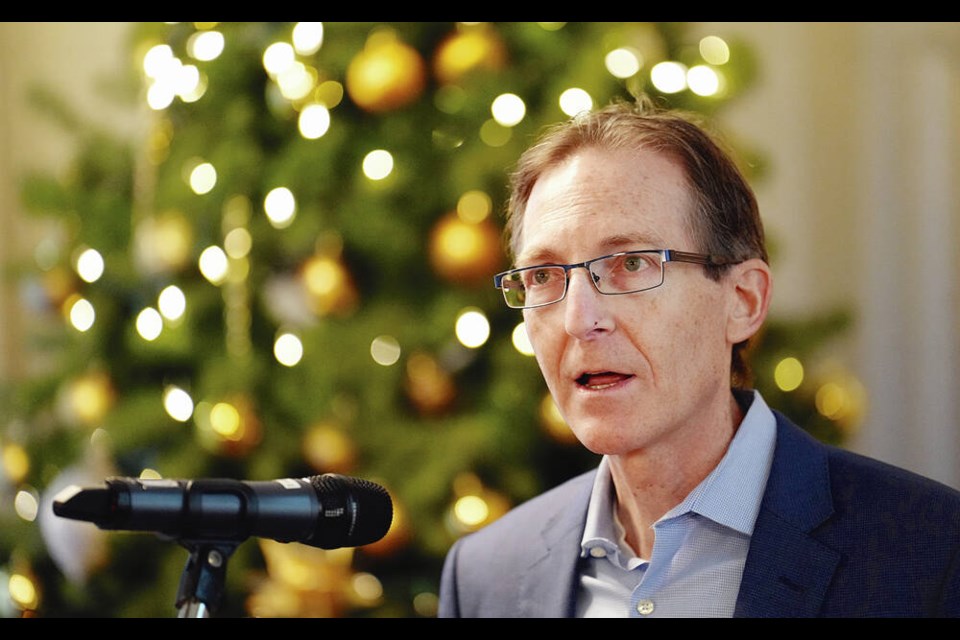B.C. Ferries is amping up its campaign for five new major vessels as it offers a concession in the hopes of persuading B.C. Ferry commissioner Eva Hage to support the plan.
“There’s another option available to us that wasn’t in the original application - and that’s in the event that we can’t convince the commissioner we need an excess vessel,” Nicolas Jimenez, B.C. Ferries president, said Friday.
Instead of life extensions to keep two existing ferries on the job, the company is saying it could extend the life of just one ferry.
The original plan — still the company’s top choice — is to order five new ships, retire four older vessels and extend the life of the Queen of Surrey and the Queen of Oak Bay. That application, submitted in December, would bring the total of major vessels to 12 from the current 11.
The additional ferry would serve as a relief ship and bring resiliency to the fleet, the company said.
Jimenez stands by the need for five new ships, citing record demand as passenger numbers are expected to continue growing and as the company faces challenges to delivering reliable service relying on an aging fleet.
For example, the propeller fell off the Queen of New Westminster outside of the Tsawwassen terminal in early September.
In the final three months of 2024, 149 sailings were cancelled due to mechanical issues, the company said.
“Any option that doesn’t enable us to build five new major vessels now means our customers will be paying more for worsening service levels in the future as expected demand continues to grow,” he said in a statement.
Sailings on major routes during 2024’s peak season ran on an average of 92 per cent capacity. Many sailings were booked days in advance, the company said.
Under B.C. Ferries’ latest submission Friday, it stuck with the option of ordering five new major vessels and but said it would extend the life of the Queen of Surrey only, meaning the total number of major vessels would remain at 11.
“While a life-extension of the [Queen of Surrey] defers the major capital investment, it only provides limited gains in service reliability and does not fully eliminate the risk of a catastrophic failure for that vessel,” the company said.
Jimenez said a life extension for an existing vessel could be in the tens of millions of dollars.
A decision on the initial application had been anticipated in mid-February but the new submission moved it to March 14. As the independent ferry commissioner, it’s up to Hage to make the decision.
She is calling for public comment by March 3.
Substantial money worries shadow the ferry service. The province allocated $500 million last year to B.C. Ferries to keep rates down. Fares were capped at an annual 3.2 per cent until 2027. But Jimenez has warned they could rise by 30 per cent or more once the current rate structure is up.
As well, shipbuilding costs have climbed by 40 per cent since 2020, he said.
The planned major vessels — a longstanding goal for the company — would be its largest-ever investment in ships.
B.C. Premier David Eby has said there is an onus on B.C. Ferries to do what it can to operate efficiently and to reduce operating costs.
When B.C. Ferries applied last year, it didn’t know what the bids would look like. But since then, some “very competitive” fixed-price bids have come in from some of the world’s leading shipyards, Jimenez said.
B.C. Ferries called for fixed bids to bring cost certainty to its proposal.
He would not reveal how many yards have submitted bids, or their location, other than saying none were from the U.S.
“We would be remiss to not take advantage of the opportunity to build and renew the fleet today.”
The company is making plans at an uncertain time globally.
Jimenez said, “I know that we’re going to be in a better place [financially] today than if we wait four or five or seven years to build new ships.”
While B.C. has some U.S. products on its vessels most of the fleet’s parts do not come from the U.S., he said.




